 Stone fruit production in Florida, specifically peaches (Prunus persica L.), has increased in acreage since the mid-2000s, predominantly driven by the desire to diversify agricultural operations. Although the National Agriculture Statistics Service does not keep annual production and acreage statistics for peaches because of the industry’s small size, a recent poll revealed just over 670 acres in Florida, with about 700 unreported acres (Table 1) (Morgan and Olmstead 2013). Statewide, current estimates of harvested peaches are approximately 4.5 million pounds, with a value of more than $6 million. Florida growers can take advantage of an early market window in which they produce the first domestic peach of the calendar year, commanding a high price per pound. The future of peach production in the state is very positive, and many growers continue to plant new orchards. This 12-page fact sheet was written by Mercy Olmstead and Kim Morgan, and published by the UF Department of Horticultural Sciences, July 2013.
Stone fruit production in Florida, specifically peaches (Prunus persica L.), has increased in acreage since the mid-2000s, predominantly driven by the desire to diversify agricultural operations. Although the National Agriculture Statistics Service does not keep annual production and acreage statistics for peaches because of the industry’s small size, a recent poll revealed just over 670 acres in Florida, with about 700 unreported acres (Table 1) (Morgan and Olmstead 2013). Statewide, current estimates of harvested peaches are approximately 4.5 million pounds, with a value of more than $6 million. Florida growers can take advantage of an early market window in which they produce the first domestic peach of the calendar year, commanding a high price per pound. The future of peach production in the state is very positive, and many growers continue to plant new orchards. This 12-page fact sheet was written by Mercy Olmstead and Kim Morgan, and published by the UF Department of Horticultural Sciences, July 2013.
http://edis.ifas.ufl.edu/hs1223
Author: dihagan
Minimum Number of Soil Moisture Sensors for Monitoring and Irrigation Purposes
 Managing soil moisture properly through irrigation is key to increasing crop yield and conserving water. By understanding soil moisture variability, growers can better manage their irrigation systems to apply the right amount of water at the right time. This 4-page fact sheet proposes guidelines for soil moisture sampling that account for spatial variability, which helps to determine the minimum number of soil moisture sensors required to survey and monitor a specific area for irrigation. Written by Lincoln Zotarelli, Michael D. Dukes, and Marcelo Paranhos, and published by the UF Department of Horticultural Sciences, July 2013.
Managing soil moisture properly through irrigation is key to increasing crop yield and conserving water. By understanding soil moisture variability, growers can better manage their irrigation systems to apply the right amount of water at the right time. This 4-page fact sheet proposes guidelines for soil moisture sampling that account for spatial variability, which helps to determine the minimum number of soil moisture sensors required to survey and monitor a specific area for irrigation. Written by Lincoln Zotarelli, Michael D. Dukes, and Marcelo Paranhos, and published by the UF Department of Horticultural Sciences, July 2013.
http://edis.ifas.ufl.edu/hs1222
Weed Management Guide for Florida Lawns
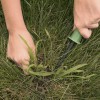 Weeds can be defined as unwanted plants or plants growing out of place. Proper identification and some understanding of how and why weeds are present in a lawn are important when selecting the best control strategy. Knowing whether or not weeds were previously present in a particular area also helps homeowners prepare control measures in the future. Weed control should be a carefully planned and coordinated program. This 8-page fact sheet was written by J.Bryan Unruh, Ramon G. Leon, Barry J. Brecke, and Laurie E. Trenholm, and published by the UF Department of Environmental Horticulture, July 2013.
Weeds can be defined as unwanted plants or plants growing out of place. Proper identification and some understanding of how and why weeds are present in a lawn are important when selecting the best control strategy. Knowing whether or not weeds were previously present in a particular area also helps homeowners prepare control measures in the future. Weed control should be a carefully planned and coordinated program. This 8-page fact sheet was written by J.Bryan Unruh, Ramon G. Leon, Barry J. Brecke, and Laurie E. Trenholm, and published by the UF Department of Environmental Horticulture, July 2013.
http://edis.ifas.ufl.edu/ep141
There Is a Safety App for That! – Some Useful Agricultural Safety Apps
 An estimated 58 billion apps will be downloaded to smartphones and 14 billion to tablets in 2013. This 4-page fact sheet explores key features in smartphones and some available apps that can enhance the safety of agricultural operations. The apps presented represent a small fraction of the apps available on various platforms. Written by Michael T. Jensen, and published by the UF Department of Agricultural and Biological Engineering, August 2013.
An estimated 58 billion apps will be downloaded to smartphones and 14 billion to tablets in 2013. This 4-page fact sheet explores key features in smartphones and some available apps that can enhance the safety of agricultural operations. The apps presented represent a small fraction of the apps available on various platforms. Written by Michael T. Jensen, and published by the UF Department of Agricultural and Biological Engineering, August 2013.
http://edis.ifas.ufl.edu/ae498
Facts About Fluoride
 Fluoride is important for healthy bones and teeth. It increases the density of bones and also can stimulate the growth of new bone. Fluoride increases the amount of minerals in our teeth and even can reverse the progression of dental cavities. People who don’t get enough fluoride have much greater rates of dental decay and cavities than those who get enough fluoride. Due to water fluoridation, almost one-half of American children have never had a cavity in their permanent teeth. This 2-page fact sheet was written by Anne Kendall [Casella], and published by the UF Department of Family Youth and Community Sciences, July 2013.
Fluoride is important for healthy bones and teeth. It increases the density of bones and also can stimulate the growth of new bone. Fluoride increases the amount of minerals in our teeth and even can reverse the progression of dental cavities. People who don’t get enough fluoride have much greater rates of dental decay and cavities than those who get enough fluoride. Due to water fluoridation, almost one-half of American children have never had a cavity in their permanent teeth. This 2-page fact sheet was written by Anne Kendall [Casella], and published by the UF Department of Family Youth and Community Sciences, July 2013.
http://edis.ifas.ufl.edu/fy887
Facts About Vitamin B6
 Vitamin B6, also called pyridoxine, is a water-soluble vitamin needed to break down the protein we eat. This vitamin is used by our bodies to make important proteins, and it helps our muscles use energy. It also helps make brain chemicals that tell the systems in our bodies what to do. This 2-page fact sheet was written by Anne Kendall, and published by the UF Department of Family Youth and Community Sciences, July 2013.
Vitamin B6, also called pyridoxine, is a water-soluble vitamin needed to break down the protein we eat. This vitamin is used by our bodies to make important proteins, and it helps our muscles use energy. It also helps make brain chemicals that tell the systems in our bodies what to do. This 2-page fact sheet was written by Anne Kendall, and published by the UF Department of Family Youth and Community Sciences, July 2013.
http://edis.ifas.ufl.edu/fy213
Sabal palmetto: Sabal or Cabbage Palm
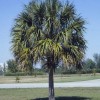 The sabal palm, or cabbage palm, is native to Florida and coastal regions of North and South Carolina and Georgia, and is the state tree of both South Carolina and Florida. The name “cabbage palm” comes from its edible immature leaves, or “heart,” which has a cabbage-like flavor. This 5-page fact sheet was written by T. K. Broschat, and published by the UF Department of Environmental Horticulture, July 2013.
The sabal palm, or cabbage palm, is native to Florida and coastal regions of North and South Carolina and Georgia, and is the state tree of both South Carolina and Florida. The name “cabbage palm” comes from its edible immature leaves, or “heart,” which has a cabbage-like flavor. This 5-page fact sheet was written by T. K. Broschat, and published by the UF Department of Environmental Horticulture, July 2013.
http://edis.ifas.ufl.edu/st575
Phosphorus (P) for Citrus Trees
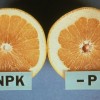 Phosphorus deficiency is not common in Florida citrus groves. If it does occur, it is more difficult to diagnose than nitrogen (N) deficiency or other nutrient element deficiencies. Growth is reduced when P supply is too low. Phosphorus is highly mobile in plants, so when it is deficient, it may move from old leaves to young leaves and other actively growing areas where energy is needed to form seeds and fruit. This 4-page fact sheet was written by Mongi Zekri and Tom Obreza, and published by the UF Department of Soil and Water Science, July 2013.
Phosphorus deficiency is not common in Florida citrus groves. If it does occur, it is more difficult to diagnose than nitrogen (N) deficiency or other nutrient element deficiencies. Growth is reduced when P supply is too low. Phosphorus is highly mobile in plants, so when it is deficient, it may move from old leaves to young leaves and other actively growing areas where energy is needed to form seeds and fruit. This 4-page fact sheet was written by Mongi Zekri and Tom Obreza, and published by the UF Department of Soil and Water Science, July 2013.
http://edis.ifas.ufl.edu/ss581
Symptoms of Diabetes
 Type 2 diabetes is a growing health concern for children and adults in the United States. Diabetes that is uncontrolled can lead to blindness, kidney disease, heart disease, and amputations. Early diagnosis is critical! If you have any of the symptoms described in this fact sheet, see your health care provider right away! This 1-page fact sheet was written by Linda B. Bobroff, and published by the UF Department of Family Youth and Community Sciences, July 2013.
Type 2 diabetes is a growing health concern for children and adults in the United States. Diabetes that is uncontrolled can lead to blindness, kidney disease, heart disease, and amputations. Early diagnosis is critical! If you have any of the symptoms described in this fact sheet, see your health care provider right away! This 1-page fact sheet was written by Linda B. Bobroff, and published by the UF Department of Family Youth and Community Sciences, July 2013.
http://edis.ifas.ufl.edu/fy344
Women and Money: Unique Issues: Protecting Your Assets
 Protecting your assets is similar to managing your risks. Managing risks means identifying and evaluating instances where you may experience a financial loss and then making a plan for how to deal with the situation. This publication shares some common ways you can protect your assets by purchasing different types of insurance, being aware of identity theft or fraud, and monitoring your credit reports. This 4-page fact sheet was written by Lynda Spence, Martie Gillen, and Diann Douglas, and published by the UF Department of Family Youth and Community Sciences, July 2013.
Protecting your assets is similar to managing your risks. Managing risks means identifying and evaluating instances where you may experience a financial loss and then making a plan for how to deal with the situation. This publication shares some common ways you can protect your assets by purchasing different types of insurance, being aware of identity theft or fraud, and monitoring your credit reports. This 4-page fact sheet was written by Lynda Spence, Martie Gillen, and Diann Douglas, and published by the UF Department of Family Youth and Community Sciences, July 2013.
http://edis.ifas.ufl.edu/fy1375
A Synopsis of US Consumer Perception of Genetically Modified (Biotech) Crops
 Over the last few decades, the use of modern tools of molecular biology has made it possible to discover, isolate, and introduce several important agricultural traits in cultivated crops. Such improvements are usually accomplished by the technique known as genetic engineering, also known as genetic modification. The aim of this article is to provide an update on recent developments with respect to GM food crops, as well as an assessment of US public opinion with regards to GM foods in general. A successful case of how a US-grown GM crop gained acceptance in one of the strictest fruit importing countries is presented. This 8-page fact sheet was written by Edward A. Evans and Fredy H. Ballen, and published by the UF Department of Food and Resource Economics, June 2013.
Over the last few decades, the use of modern tools of molecular biology has made it possible to discover, isolate, and introduce several important agricultural traits in cultivated crops. Such improvements are usually accomplished by the technique known as genetic engineering, also known as genetic modification. The aim of this article is to provide an update on recent developments with respect to GM food crops, as well as an assessment of US public opinion with regards to GM foods in general. A successful case of how a US-grown GM crop gained acceptance in one of the strictest fruit importing countries is presented. This 8-page fact sheet was written by Edward A. Evans and Fredy H. Ballen, and published by the UF Department of Food and Resource Economics, June 2013.
http://edis.ifas.ufl.edu/fe934
Florida Foliage House Plant Care: ZZ Plant
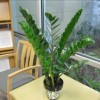 ZZ plant is enjoyed for its unique appearance, its ability to grow under low light conditions, and its tolerance to drought. ZZ’s naturally glossy leaves are so shiny that the plant appears to have been polished. This 2-page fact sheet was written by R. J. Henny and J. Chen, and published by the UF Department of Environmental Horticulture, July 2013.
ZZ plant is enjoyed for its unique appearance, its ability to grow under low light conditions, and its tolerance to drought. ZZ’s naturally glossy leaves are so shiny that the plant appears to have been polished. This 2-page fact sheet was written by R. J. Henny and J. Chen, and published by the UF Department of Environmental Horticulture, July 2013.
http://edis.ifas.ufl.edu/ep480
Seedcorn maggot, Delia platura (Meigen) (Insecta: Diptera: Anthomyiidae)
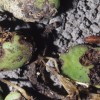 The seedcorn maggot is a polyphagous pest, affecting more than 40 different host plants. It is an important pest of germinating soybeans and corn, and also attacks a wide range of horticultural crops including beans, peas, cucumber, melon, onion, pepper, potato, and other vegetables. Seedcorn maggots damage newly planted seeds by feeding on seed contents, often leaving empty seed shells and preventing germination. Although usually no more than 2% of the seedlings get infested by this insect, 30% to 60% plant loss may occur in the field. This 5-page fact sheet was written by Harsimran Kaur Gill, Gaurav Goyal, and Jennifer L. Gillett-Kaufman, and published by the UF Department of Entomology and Nematology, July 2013.
The seedcorn maggot is a polyphagous pest, affecting more than 40 different host plants. It is an important pest of germinating soybeans and corn, and also attacks a wide range of horticultural crops including beans, peas, cucumber, melon, onion, pepper, potato, and other vegetables. Seedcorn maggots damage newly planted seeds by feeding on seed contents, often leaving empty seed shells and preventing germination. Although usually no more than 2% of the seedlings get infested by this insect, 30% to 60% plant loss may occur in the field. This 5-page fact sheet was written by Harsimran Kaur Gill, Gaurav Goyal, and Jennifer L. Gillett-Kaufman, and published by the UF Department of Entomology and Nematology, July 2013.
http://edis.ifas.ufl.edu/in1002
Magnesium (Mg) for Citrus Trees
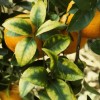 Magnesium deficiency has been a major problem in citrus production. In Florida, Mg deficiency is commonly referred to as “bronzing.” Trees with inadequate Mg may have no symptoms in the spring growth flush, but leaf symptoms develop as the leaves age and the fruit expand and mature in the summer and fall. Magnesium deficiency symptoms occur on mature leaves following the removal of Mg to satisfy fruit requirements. This 4-page fact sheet was written by Mongi Zekri and Tom Obreza, and published by the UF Department of Soil and Water Science, July 2013.
Magnesium deficiency has been a major problem in citrus production. In Florida, Mg deficiency is commonly referred to as “bronzing.” Trees with inadequate Mg may have no symptoms in the spring growth flush, but leaf symptoms develop as the leaves age and the fruit expand and mature in the summer and fall. Magnesium deficiency symptoms occur on mature leaves following the removal of Mg to satisfy fruit requirements. This 4-page fact sheet was written by Mongi Zekri and Tom Obreza, and published by the UF Department of Soil and Water Science, July 2013.
http://edis.ifas.ufl.edu/ss582
Nitrogen (N) for Citrus Trees
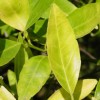 Nitrogen is the key component in mineral fertilizers applied to citrus groves. N has more influence on tree growth, appearance, and fruit production/quality than any other mineral element. Nitrogen affects the absorption and distribution of practically all other elements, and it is particularly important to the tree during flowering and fruit set. This 3-page fact sheet was written by Mongi Zekri and Tom Obreza, and published by the UF Department of Soil and Water Science, July 2013.
Nitrogen is the key component in mineral fertilizers applied to citrus groves. N has more influence on tree growth, appearance, and fruit production/quality than any other mineral element. Nitrogen affects the absorption and distribution of practically all other elements, and it is particularly important to the tree during flowering and fruit set. This 3-page fact sheet was written by Mongi Zekri and Tom Obreza, and published by the UF Department of Soil and Water Science, July 2013.
http://edis.ifas.ufl.edu/ss580
The Food Safety Modernization Act and the FDA Facility Registration Program
 The Food Safety Modernization Act that President Obama signed into law January 4, 2011 represents the most sweeping update to food safety regulation since the Federal Food, Drug, and Cosmetic Act of 1938. As part of FSMA, registration is required of facilities that manufacture, process, pack or hold food for human or animal consumption. This 3-page fact sheet was written by Susanna Richardson, Renée Goodrich Schneider, Mark A. Ritenour, Michelle D. Danyluk, and Keith R. Schneider, and published by the UF Department of Food Science and Human Nutrition, July 2013.
The Food Safety Modernization Act that President Obama signed into law January 4, 2011 represents the most sweeping update to food safety regulation since the Federal Food, Drug, and Cosmetic Act of 1938. As part of FSMA, registration is required of facilities that manufacture, process, pack or hold food for human or animal consumption. This 3-page fact sheet was written by Susanna Richardson, Renée Goodrich Schneider, Mark A. Ritenour, Michelle D. Danyluk, and Keith R. Schneider, and published by the UF Department of Food Science and Human Nutrition, July 2013.
http://edis.ifas.ufl.edu/fs231
When the Kids Move Back Home
 Recent trends show that more and more adult children are returning to live with their parents. With intergenerational cohabitation on the rise, it’s a good idea to examine the “what-ifs” before the doorbell rings. If you find yourself making up spare rooms for your grown children or even their children, you will be glad you thought about the issues in advance. This publication discusses the potential challenges and practical matters you need to know about if your adult children move back home. This 4-page fact sheet was written by Lynda Spence and Larry Forthun, and published by the UF Department of Family Youth and Community Sciences, July 2013.
Recent trends show that more and more adult children are returning to live with their parents. With intergenerational cohabitation on the rise, it’s a good idea to examine the “what-ifs” before the doorbell rings. If you find yourself making up spare rooms for your grown children or even their children, you will be glad you thought about the issues in advance. This publication discusses the potential challenges and practical matters you need to know about if your adult children move back home. This 4-page fact sheet was written by Lynda Spence and Larry Forthun, and published by the UF Department of Family Youth and Community Sciences, July 2013.
http://edis.ifas.ufl.edu/fy1376
Facts about Magnesium
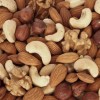 Many Americans don’t get enough magnesium in their diets. But most healthy people do not have signs of deficiency even if their intake is low because the body stores this mineral. However, people who abuse alcohol, take certain diuretic drugs, or have kidney disease may be at risk for magnesium deficiency. Long-lasting diarrhea or vomiting also can cause a deficiency. Older adults often do not get enough magnesium in their diets. This 2-page fact sheet was written by Linda B. Bobroff and Jennifer Hillan, and published by the UF Department of Family Youth and Community Sciences, July 2013.
Many Americans don’t get enough magnesium in their diets. But most healthy people do not have signs of deficiency even if their intake is low because the body stores this mineral. However, people who abuse alcohol, take certain diuretic drugs, or have kidney disease may be at risk for magnesium deficiency. Long-lasting diarrhea or vomiting also can cause a deficiency. Older adults often do not get enough magnesium in their diets. This 2-page fact sheet was written by Linda B. Bobroff and Jennifer Hillan, and published by the UF Department of Family Youth and Community Sciences, July 2013.
http://edis.ifas.ufl.edu/fy1088
'Florida Radiance' Strawberry
 ‘Florida Radiance’ is a strawberry cultivar released from UF/IFAS in 2008. As of 2012, it has become a major cultivar in Florida and other winter and early spring production regions worldwide. In all markets outside the United States and Canada, it is marketed as ‘Florida Fortuna’. In addition to commercial production, it has been tested for many years in field plots at the UF/IFAS Gulf Coast Research and Education Center in Wimauma and the Florida Strawberry Growers Association headquarters in Dover for disease, fruit, and plant traits. This 4-page fact sheet was written by Vance M. Whitaker, Craig K. Chandler, Bielinski M. Santos, and Natalia A. Peres, and published by the UF Department of Horticultural Sciences, June 2013.
‘Florida Radiance’ is a strawberry cultivar released from UF/IFAS in 2008. As of 2012, it has become a major cultivar in Florida and other winter and early spring production regions worldwide. In all markets outside the United States and Canada, it is marketed as ‘Florida Fortuna’. In addition to commercial production, it has been tested for many years in field plots at the UF/IFAS Gulf Coast Research and Education Center in Wimauma and the Florida Strawberry Growers Association headquarters in Dover for disease, fruit, and plant traits. This 4-page fact sheet was written by Vance M. Whitaker, Craig K. Chandler, Bielinski M. Santos, and Natalia A. Peres, and published by the UF Department of Horticultural Sciences, June 2013.
http://edis.ifas.ufl.edu/hs400
Facts about Zinc
 Zinc deficiency can affect the immune system, cognitive function, and growth in children. Severe zinc deficiency can cause diarrhea, hair loss, poor appetite, skin disorders, impotence, and changes in taste. People who drink alcohol in excess are at high risk for zinc deficiency (and other health problems). This 2-page fact sheet was written by Linda B. Bobroff, and published by the UF Department of Family Youth and Community Sciences, July 2013.
Zinc deficiency can affect the immune system, cognitive function, and growth in children. Severe zinc deficiency can cause diarrhea, hair loss, poor appetite, skin disorders, impotence, and changes in taste. People who drink alcohol in excess are at high risk for zinc deficiency (and other health problems). This 2-page fact sheet was written by Linda B. Bobroff, and published by the UF Department of Family Youth and Community Sciences, July 2013.
http://edis.ifas.ufl.edu/fy218